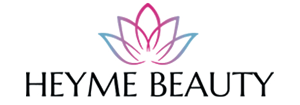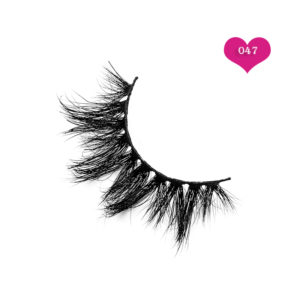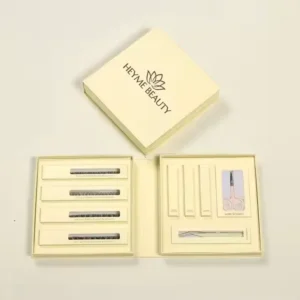![]()
Let’s be real for a second—everyone loves waking up with long, fluttery lashes. It feels like cheating the system: you roll out of bed looking effortlessly glam. But there’s always that nagging little voice in your head (or that concerned friend) asking: “Do eyelash extensions hurt your natural lashes?” It’s a valid question—and if you’ve been wondering the same, you’re not alone.
This article doesn’t just repeat the surface-level stuff. We’re pulling back the curtain from the perspective of a certified eyelash extension manufacturer, and we’re speaking with lash artists, dermatologists, and real users to give you the facts, minus the fluff. Because when it comes to your eyes, safety, quality, and truth matter.
What Are Eyelash Extensions, Really?
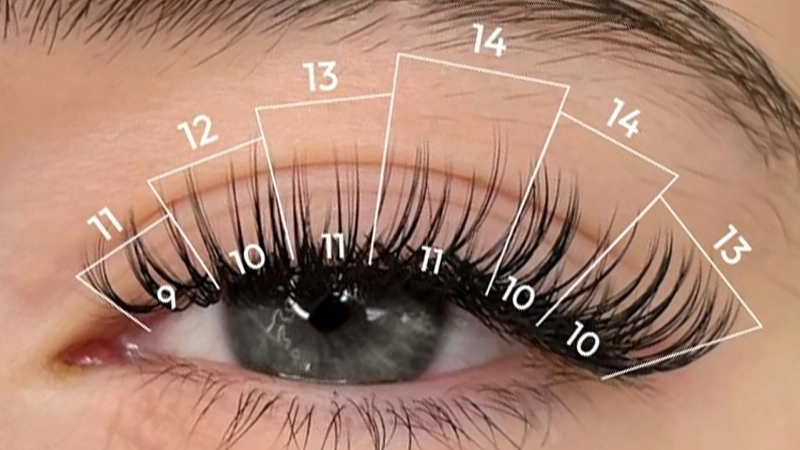
Eyelash extensions are semi-permanent fibers—usually made of synthetic materials like PBT (polybutylene terephthalate), silk, or mink—applied to each individual natural lash using a medical-grade adhesive. They come in various lengths, thicknesses, and curls to suit different eye shapes and preferences.
But here’s where people get it twisted. Not all extensions are created equal. Poorly made lashes can be heavy, inflexible, and downright harmful. Our company specializes in lightweight, cruelty-free extensions that follow ISO 9001 manufacturing standards—which means our products are not only safe but meticulously engineered for everyday wear.
We’ve spent years perfecting our formulations, especially the adhesive. Cheap glues often contain formaldehyde, a harsh chemical that can irritate eyes and skin. Our adhesive? It’s formaldehyde-free, latex-free, and EU-compliant—trusted by thousands of professionals worldwide.
The Most Common Lash Health Myths
Let’s bust some myths that float around like bad lash glue:
- Myth #1: Extensions always damage natural lashes.
Not true—when applied correctly and cared for properly, your lashes should grow and shed naturally without harm. - Myth #2: Lash glue is toxic.
Only if it’s unregulated or low quality. High-quality adhesives are designed with eye safety in mind and adhere to strict cosmetic regulations. - Myth #3: You have to take breaks between sets.
Another half-truth. While breaks can help, many of our clients wear extensions year-round with no issue, as long as they maintain them properly.
The truth is, lash damage is almost always the result of poor application, low-quality products, or neglectful aftercare—not the extensions themselves.
How Eyelash Extensions Interact with Natural Lashes
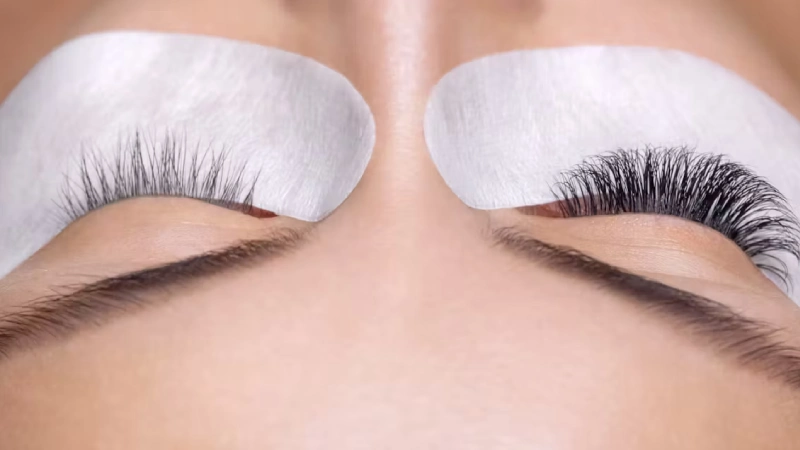
Here’s a mini science lesson. Your natural lashes go through a growth cycle: Anagen (growth), Catagen (transition), and Telogen (resting/shedding). Lash extensions are bonded to natural lashes during their mid-to-late phase, meaning they’ll naturally fall out anyway.
What matters is the weight of the extension and how it’s applied. If too much weight is placed on immature lashes, or if one extension is glued to multiple natural lashes, breakage can occur. That’s why lash isolation is crucial, and why we train our partners to never compromise on application techniques.
Our lashes are ultra-light—so lightweight that one of our popular SKUs weighs just 0.03 grams. That’s less than a droplet of water!
Factors That Can Harm Your Natural Lashes
Let’s call it what it is: bad lash experiences don’t just “happen.” There are clear reasons why someone’s natural lashes might take a hit after getting extensions—and almost all of them are preventable.
First up: poor application techniques. If a technician isn’t trained in proper isolation and application, they might end up gluing multiple natural lashes together. This prevents your lashes from shedding naturally and leads to tension, breakage, or traction alopecia—a condition where hair falls out due to constant pulling.
Then, there’s the issue of low-quality products. Cheap lash fibers can be too heavy or stiff, causing stress on the lash follicle. The wrong kind of adhesive—especially those that aren’t medical-grade or compliant with FDA and EU regulations—can cause allergic reactions or chemical burns. That’s why we only manufacture lashes using premium, soft PBT and EU-approved adhesives. You won’t find a hint of formaldehyde or latex in our ingredients list.
Lastly, client behavior plays a big role. Sleeping face-down, rubbing your eyes, or not cleaning your lashes regularly can cause them to fall out prematurely. We always educate our buyers to pass aftercare knowledge down to clients because it’s truly the last line of defense.
The Role of Professional Application
You wouldn’t let an unlicensed dentist touch your teeth, so why trust your eyes to a self-taught lash tech?
Professional lash artists undergo rigorous training to understand lash growth cycles, weight ratios, lash mapping, and most importantly—sanitation protocols. And when they partner with us, they also gain access to detailed manuals, safety datasheets, and video tutorials backed by lash scientists and beauty chemists.
Certified lash artists don’t just apply lashes—they protect your lash line. Our partners often tell us that the biggest compliment they get from clients is: “My natural lashes are still strong—even after months of extensions!” That doesn’t happen by accident. It’s the result of skill, quality products, and respect for the client’s lash health.
What Science and Research Say
You don’t have to take our word for it. According to a 2021 study published in the International Journal of Trichology, lash loss in extension wearers is linked primarily to improper application techniques, not the extensions themselves. The American Academy of Ophthalmology echoes that by stating that “eyelash extensions are generally safe when applied by trained professionals using sanitary practices.”
Furthermore, the FDA and European Cosmetic Regulations (EC) No 1223/2009 have clear standards on cosmetic adhesive ingredients. We strictly comply with these, ensuring our adhesives are safe for use around the eye area and have passed dermal irritation and sensitivity tests.
Our factory also complies with ISO 22716 guidelines, which outline Good Manufacturing Practices (GMP) for cosmetic products—something many “no-name” brands cannot claim.
Our Manufacturing Standards: Built for Lash Health
As one of the leading OEM and private label eyelash extension manufacturers, we take safety seriously. Our entire product line is cruelty-free, vegan-friendly, and manufactured in a GMP-compliant, ISO 9001 and 22716-certified facility.
Our R&D team works tirelessly to perfect adhesives with maximum retention yet minimal irritation. We conduct routine patch tests, and all new formulas undergo third-party lab evaluations before hitting the market.
Clients love that we offer custom curl patterns, lash weights, and even colored lashes that don’t compromise lash health. We also provide detailed MSDS (Material Safety Data Sheets) and COAs (Certificates of Analysis) with every batch—because transparency builds trust.
Customer Experience: Lash Technicians Speak
Don’t just take it from us. Hear it from the lash professionals who buy from us in bulk every month.
“I’ve worked with a lot of suppliers over the years, and this one is by far the best. The lashes are soft, easy to fan, and never cause issues with retention or natural lash health.” — Ava, Lash Salon Owner, New York
“My clients used to complain about stinging or redness with other brands. Since switching to this manufacturer, we’ve had zero allergic reactions—and better results overall.” — Ming, Master Lash Trainer, Singapore
These testimonials are not isolated. We receive glowing reviews from hundreds of lash techs who count on our products to keep their clients safe and satisfied.
End User Reviews: Real Women, Real Lashes
And of course, the end users—the people who actually wear the lashes day after day—have plenty to say:
“I’ve been getting lashes for over a year, and my natural lashes are still full. It’s all thanks to high-quality extensions and a great tech!” — Sarah, Beauty Blogger
“No irritation, no fall-out, and they look amazing. I trust these lashes completely.” — Jenny, Lash Addict
These aren’t scripted PR lines. They’re real experiences, and they matter because they show that when done right, lash extensions don’t just enhance your beauty—they protect it.
How to Choose a Safe Lash Extension Provider
Recommended products
-
Breathable Weft Volume Lashes | 047
-
Best at Home Lash Extensions Kit
-
Camilla Lashes | Lash Extensions
Picking the right lash tech can make or break your lash health. Here’s what to look for:
- Certifications from reputable lash academies
- Before and after portfolios
- A consultation process that includes allergy testing
- Use of ISO-compliant, FDA-safe adhesives
- Clean tools and workspaces
You should never feel rushed or uninformed during your lash appointment. Ask questions. If a tech can’t tell you the ingredients in their glue, that’s a red flag.
Aftercare Makes All the Difference
Even the best application and products won’t help if you don’t take care of your lashes afterward. Our recommended aftercare routine includes:
- Gentle cleansing with a lash-safe foam cleanser
- Brushing your lashes daily with a clean spoolie
- Sleeping on your back to avoid crushing your lashes
- Avoiding oil-based skincare products around the eye area
We’ve found that clients who follow these tips retain their lashes up to 50% longer, with less natural lash fallout.
When Lash Damage Really Happens (and Why)
So when do things go wrong? Usually in three scenarios:
- Lash removal done at home: Pulling out extensions damages the follicle.
- Allergic reactions: Rare, but possible with low-quality adhesives.
- Stacking or excessive volume: Overloading small lashes with heavy fans can strain the root.
But again, these are avoidable. A professional lash artist knows how to identify weak lashes, balance volume, and use proper tools for removal.
Restoring Natural Lash Health Post-Extensions
Let’s say your lashes took a hit. It happens. Here’s how you bounce back:
- Castor oil or vitamin E oil massaged into the lash line
- Lash serums containing peptides and biotin
- Avoiding extensions for one growth cycle (6–8 weeks)
- Maintaining a healthy diet rich in proteins and omega-3s
The lash cycle is forgiving. With proper care, most people see full regrowth in 6–12 weeks.
Industry Standards and Compliance
Our lash products adhere to:
- FDA cosmetic guidelines (USA)
- ISO 9001 and 22716 GMP standards
- EU Cosmetic Regulation EC 1223/2009
- RoHS and REACH environmental standards
These certifications aren’t just badges—they’re proof that our products are tested, safe, and consistent.
Lash Safety Innovations in 2025
The lash industry isn’t slowing down. In fact, 2025 is ushering in exciting new safety tech:
- Smart adhesives that respond to humidity for better bonding
- Heat-bonding lashes that eliminate the need for glue entirely
- Anti-microbial lash fibers that prevent infections
As manufacturers, we’re already testing next-gen formulas and lightweight nano-fiber lashes that mimic the real thing even more closely.
Final Verdict: Do Eyelash Extensions Hurt Your Lashes?
Here’s the honest truth: Eyelash extensions DO NOT hurt your natural lashes—if done right.
The damage horror stories usually trace back to untrained technicians, poor aftercare, or low-quality products. But when you work with certified lash artists who use professional-grade extensions (like ours), your natural lashes can remain full, healthy, and thriving.
In fact, many of our loyal clients say they’ve worn extensions for years without a single bald spot. That’s not luck—it’s smart lash care.
FAQ
1. Will eyelash extensions make my real lashes fall out?
Not if they’re applied correctly and maintained well. Lash shedding is natural—extensions don’t accelerate this unless they’re too heavy or glued improperly.
2. Is it safe to get lash extensions regularly?
Absolutely. Many people wear extensions continuously with no harm, especially when using high-quality lashes and adhesives that follow global safety standards.
3. Can I wear mascara with eyelash extensions?
You technically can, but it’s not recommended. Most mascaras contain oils or waxes that can weaken the adhesive bond. If needed, use a water-based mascara.
4. What’s the safest adhesive to use?
Look for medical-grade, latex-free, and formaldehyde-free adhesives. Ours is EU-compliant and passes dermal toxicity and irritation tests.
5. How long should a full set of lash extensions last?
With proper care, a full set lasts about 4–6 weeks, depending on your natural lash cycle. Regular fills every 2–3 weeks help maintain fullness.
6. What should I avoid after getting lash extensions?
Avoid oil-based makeup removers, steam, excessive touching, and sleeping face-down. Following aftercare advice ensures maximum retention and lash health.
